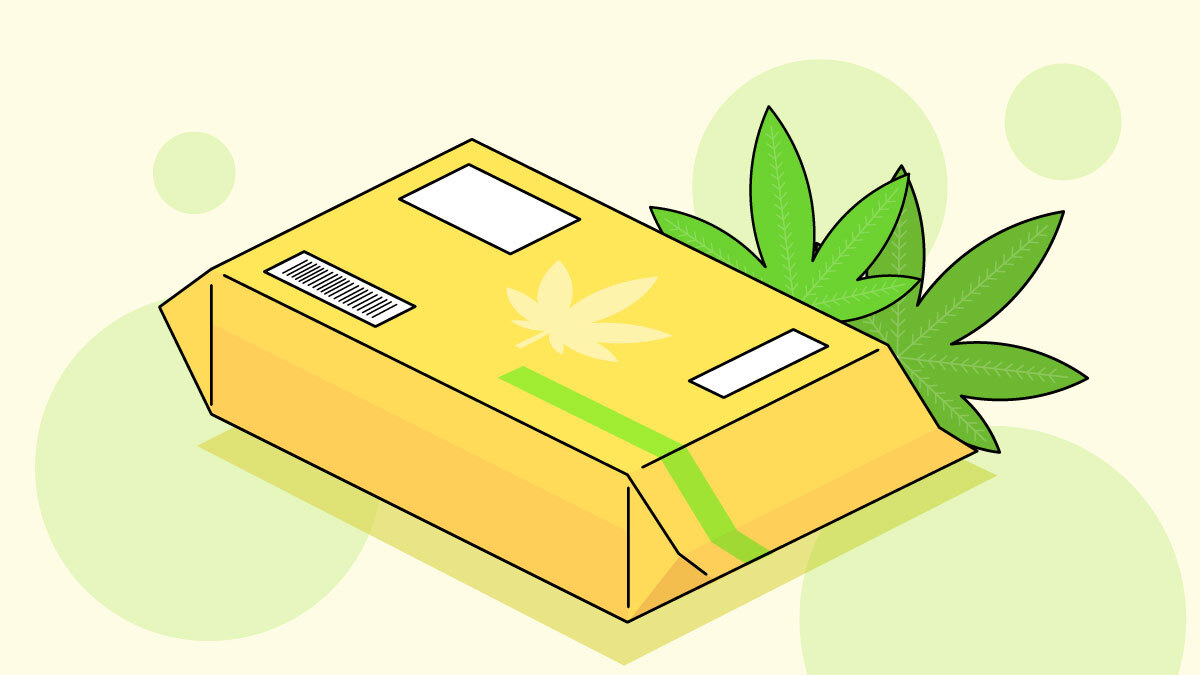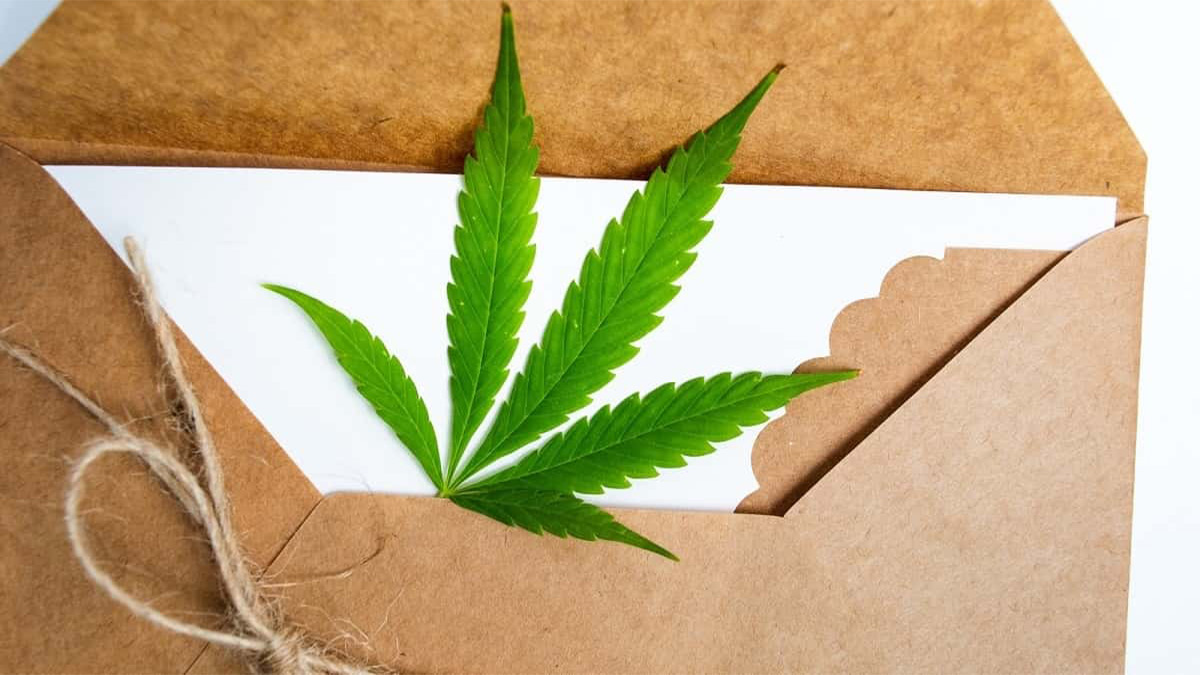Can You Send Weed Through The Mail Legally? How To Ship Marijuana Safely

The U.S. Postal Service is a lot less reliable than it used to be. That’s mostly due to drastic cuts in the workforce, coupled with policies designed to deliberately slow mail service.
That’s convinced many shippers to switch to private carriers like FedEx and UPS when they’re sending valuable packages that they don’t want to be lost or delayed.
“Valuable” is in the mind of the beholder, of course. But when your stash is running low, you could be forgiven for calling a shipment of weed both valuable and important.
Those who live in “legal” states can simply run out to the nearest dispensary. Those living in backward states, though, don’t have that luxury. They have to call or visit (or find) a dealer in order to get resupplied with potentially substandard flower.
OR…they call can a friend or relative who lives in a legal state and ask for a favor. How tough could it be for them to pick up an ounce and ship it?
It shouldn’t be tough at all. But here’s the problem: whether they use FedEx, UPS, or the Postal Service, it’s illegal. And it could cause big legal problems for everyone involved.
Let’s dig deeper into the issue.
The Legality of Weed
Recreational use of cannabis is legal in 18 states and Washington, D.C. Medical marijuana is legal in 19 more.
However, the sale, use, and possession of weed have been illegal under U.S. law since 1937. In 1918, the so-called Farm Law created an exception for cannabis products with a THC content of less than 0.3%. That was simply a move to legalize CBD.
But despite the legalization measures passed in states around the country, pot is still illegal according to federal law. Right now, the feds aren’t rigorously enforcing U.S. laws against weed use or dispensary sales. But they certainly could, at any point.
There’s a bigger issue to consider: the federal government is still actively working to stop marijuana “trafficking.”
That word makes most people think of the DEA seizing huge bales of pot crossing the U.S.-Mexico border. Cross-border cannabis trafficking is way down these days, with so many U.S. farms (and consumers) growing weed in legal states, but it remains a focus of American law enforcement.
Another federal agency is also still working hard to stop marijuana trafficking. You’ve probably guessed which one, too. The U.S. Postal Service.
Postal Regulations and Weed

A statement from the Postal Service makes the agency’s position clear.
“We pursue traffickers of all forms of illegal narcotics – including marijuana, which remains illegal.”
That statement focuses on postal inspectors’ work to fight “organized narcotics-trafficking operations.” Inspectors and their drug-sniffing dogs, however, don’t know whether a package has been sent by a drug cartel or Joe Weedbuyer in Illinois. They simply look for shipments containing cannabis, and then they either track or seize them.
Statistics show that less and less marijuana is being seized by the Postal Service each year, most likely because of the legalization push that’s swept the country. Even so, the USPS confiscated nearly 16,000 packages suspected of containing weed in the last year that numbers were made public.
And sending weed through the mail could theoretically end up with the FBI knocking at your door. Cannabis is still listed as a Schedule I drug under U.S. law; using a federal service to ship any amount less than 50 grams can be punished with a five-year prison term (for a first offense). The penalties are even higher for larger amounts.
It’s true that only a minuscule number of people are actually in federal prison for marijuana possession – but that doesn’t guarantee that you’ll beat the odds.
What About Using FedEx or UPS Instead?
That’s actually a worse idea.
Ever since FedEx was indicted in 2014 for allegedly transporting illegal drugs, private carriers have been much more vigilant in their package inspections. That can spell bad news for people shipping buds using FedEx, UPS, or DHL.
Here’s why. The feds need probable cause and a search warrant to open any suspicious packages they’ve set aside, but private shippers don’t. Court decisions have said these companies can open any package, at any time, once they’ve taken possession of it. One additional problem: the USPS doesn’t require a return address on packages, but private shippers do.
That doesn’t mean you should feel “safe” sending weed through the mail, though. The Postal Service may need a warrant to open packages, but they can track your packages if they think there’s cannabis inside. There’s an incentive to do just that; the USPS offers a reward of $50,000 to postal workers (or anyone else) who provide information that leads to a drug indictment.
In short, sending packages containing weed is risky, period. Since using the mail seems slightly less risky, some people cross their fingers and decide to do it anyway. If you’re one of them, there are steps you can take that might help your care package arrive safely and securely.
Common Sense Tips for Sending Weed
We have to say it again: sending weed through the mail is illegal, and you could face big trouble if you’re caught. These suggestions are simply advice from those who’ve managed to do it successfully.
- Use a new box: Old, beat-up boxes attract more attention during shipping, and are more likely to have developed cracks that can let telltale odors seep out.
- Seal the weed carefully: Start by putting the flower in plastic bags that can be vacuum sealed, put those bags into several more fully-sealed bags, and then surround those bags with other packing material that can absorb odors. Each bag should be carefully washed in soap and water first, because soap provides a neutral scent that may fool drug-sniffing dogs.
- Put something else into the box: Potpourri (not pot) or chocolate have pleasant scents that may cover any trace of weed odor, and people often ship them. Don’t use heavier perfume or cologne to try to cover your tracks; dogs are trained to look for so-called “masking agents.”
- Stay as anonymous as possible: Obviously, don’t put your return address on the box; it may look more natural if you use someone else’s address instead. (Don’t make one up; an address that doesn’t exist will make post office computers go “tilt.”) And don’t pay for shipping with a credit or debit card that can be traced. Always pay in cash. (Buy your new shipping box with cash, too.)
Those suggestions may help you avoid detection if you do decide to send weed through the mail. But here’s a better idea: take a road trip. Most people live within a relatively-easy drive of a dispensary in a legal state; a one-day trip is certainly more fun and less disruptive than a potential five-year prison stay.
Can You Send Weed Through The Mail? FAQ
Q: Is it legal to send weed through the mail within a state that’s legalized cannabis?
A: No. Remember, state or local laws don’t govern the Postal Service. Federal laws do, and they are the laws that postal inspectors enforce regardless of what state they’re in.
Q: Can you send Delta-8 THC through the mail?
A: There’s no definitive answer to that question. There’s debate over whether this psychoactive cannabinoid, usually synthesized from CBD, is banned by federal laws that ban synthetic “designer drugs.” Delta-8 is already banned in some states, too. The best idea is to avoid shipping it through the mail; you certainly don’t want to end up as one of the feds’ test cases.
Q: What about sending hemp or CBD through the mail?
A: You should be fine as long as it contains less than 0.3% THC.